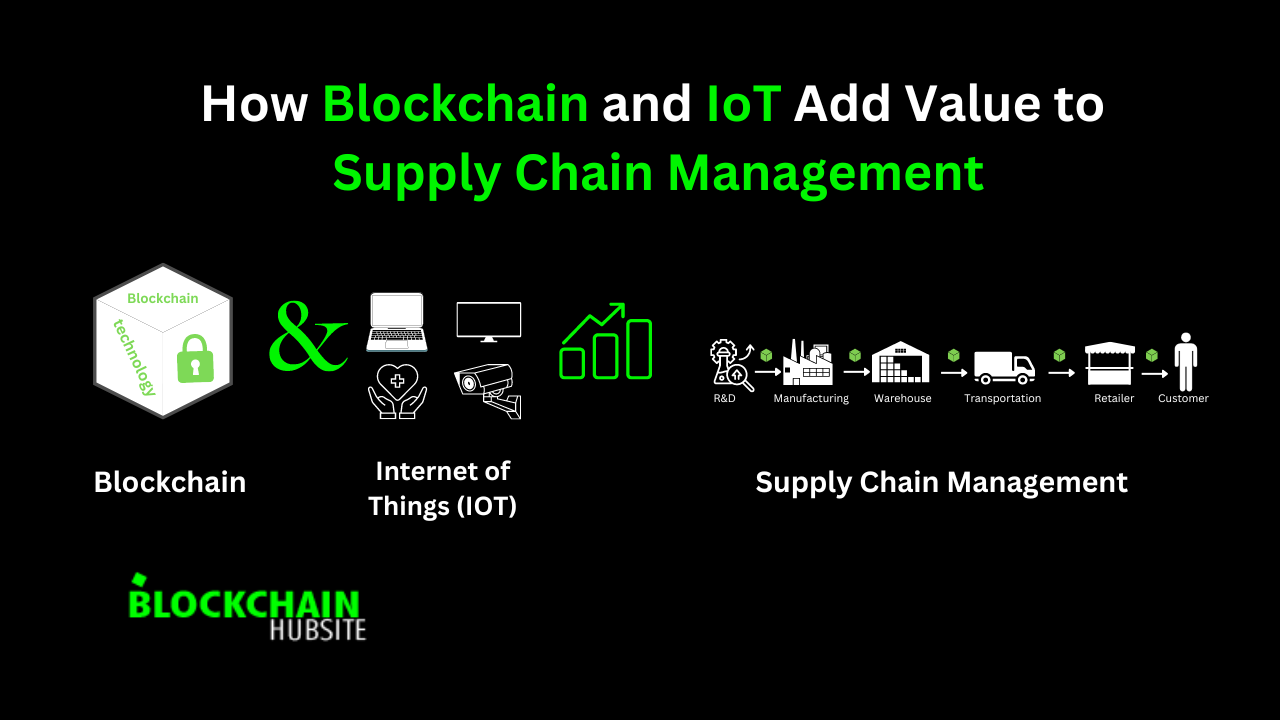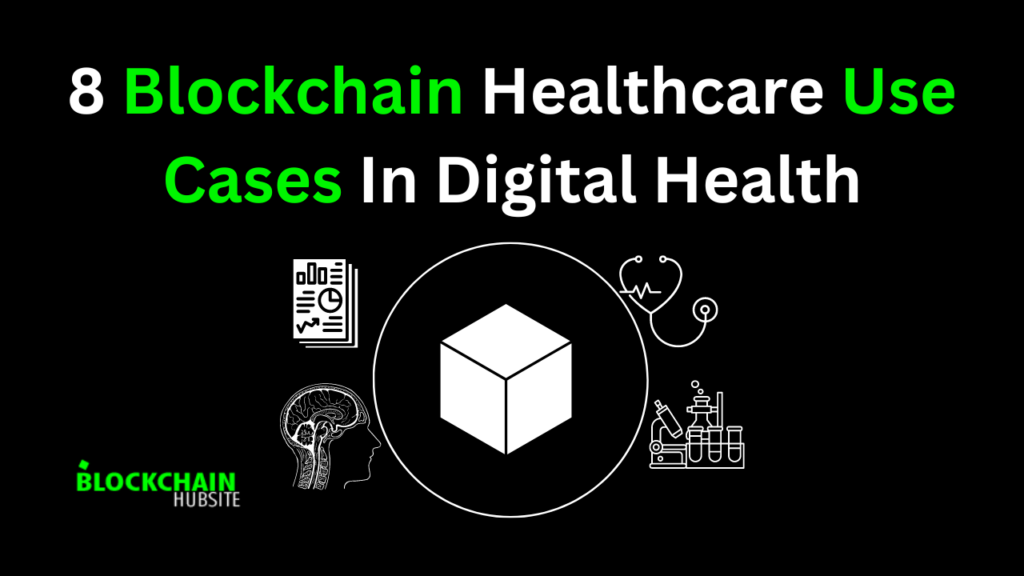
Table of Contents
Introduction
In the modern world, blockchain-based systems are getting a lot of attention in many industries, especially in the supply chain, because they are easy to use, keep privacy, and are more efficient than traditional systems.
A supply chain management system based on blockchain technology is built on a shared public ledger that keeps an unchangeable record of all the data about shipping status, location status, storage environment, and more. Blockchain also raises customer satisfaction through real-time process optimization, security, and transparency.
Contrarily, the IoT is a network that connects physical devices, the information they send back through a network, and the programs that process that information. End devices transfer data in real-time and let companies process information at a lower cost. IoT systems use the goods being moved as physical items and active sensor devices to send information and help improve supply chain and logistics business processes.
But because networks are so complicated now, the old supply chain faces many problems. Combining blockchain with the Internet of Things (IoT) framework can solve the problems that traditional systems face in many businesses. The IoT-integrated blockchain system essentially offers enough advantages, such as connecting the flow links in the supply chain to increase the efficiency of the supply chain network, making the system transparent to reduce code of conduct violations across the supply chain networks, and the immutable properties aid the stakeholders in tracking the products throughout the networks.
Overview of supply chain management

The term “supply chain” refers to the entire system of businesses and organizations that work together to provide goods and services to a single end customer. It consists of raw materials suppliers, finished goods manufacturers, warehouses where those goods are stored, distribution centers where they are sent, and stores that sell them to the consumer.
“Supply chain management” (SCM) refers to a network of businesses that “transfers” goods through a series of predetermined “steps.” With only two or three companies, gathering a product and delivering it to the end customer is safe. These comprise an agile network of material and section markers, subject matter specialists in product development, wholesalers, retail carriers, and transportation connections, primarily made up of members of manufacturing organizations.
Importance of SCM
- SCM actions can enhance service to customers. Efficient supply chain management can guarantee happy customers by ensuring all required goods are readily available at the right time and place. Customer satisfaction can be boosted by using SCM to ensure timely product delivery and responsive service and support. Companies can save money on production thanks to SCM.
- Profits and cash flow may be increased significantly due to the lowered expenses associated with the supply chain.
- SCM can ensure human survival by enhancing healthcare, shielding people from adverse weather, and preserving human life.
- The supply chain is also essential for the transmission of electricity to residences and companies, which in turn provides the power for appliances such as lights, heaters, air conditioners, and refrigerators.
The Role of Blockchain in Supply Chain Management

The distributed ledger technology known as blockchain has the potential to completely alter how products and transactions are tracked across a supply chain. Blockchain technology allows for the creation of a distributed, immutable ledger that all participants in the supply chain may use to track the history, location, and current status of all products.
Using blockchain technology, participants in the supply chain can improve efficiency and trust in the network while decreasing the likelihood of fraud, errors, and delays. Blockchain technology has many potential applications in the supply chain, including verifying product authenticity, tracking raw materials, and maintaining regulatory compliance.
Unlock the power of Blockchain in Supply Chain Management – Master the game-changing technology The Role of Blockchain in Supply Chain Management .
The Role of IoT in Supply Chain Management

Imagine a warehouse that stores and ships several thousand items for an online retailer. The warehouse uses information from its IoT sensors to keep tabs on the stock of each product and issue a warning or make an order to restock when the stock reaches a predetermined low point. That’s one way the Internet of Things (IoT) can revolutionize logistics and supply chain management.
The benefits of using IoT in supply chain management
Supply chains are not as resilient as one might imagine, clearly evidenced by the COVID-19 outbreak and following worldwide geopolitical events. There are more significant opportunities for interruptions when things travel longer and go through more hands. In this case, the Internet of Things can help companies handle unusual circumstances.
- Real-time location tracking
With the help of IoT devices, it is possible to monitor where items are at all times, whether in a small warehouse or a large ship. The IoT system sends automated warnings if the products are shipped down the wrong path.
- Maintain storage conditions
Humidity, heat, pressure, and cold can all cause problems for many products. Internet of Things devices can monitor a storage facility or delivery truck’s temperature and humidity and make necessary adjustments automatically.
- Locate items in the warehouse
Finding the right product and constantly tracking its quantity in a vast warehouse can be challenging. Utilizing IoT in logistics improves productivity and protects workers. When the Internet of Things (IoT) is combined with AI, it can fully automate the warehouse with little to no human intervention.
- Improve contingency planning
Managers can plan and get ready for delays due to factors like traffic, weather, potential accidents, and other delays thanks to the Internet of Things (IoT) and data analytics. By tracking the flow of commodities, managers may create dynamic backup plans and employ real-time notifications to reduce potential dangers.
Improving overall supply chain performance is essential since malfunctioning machinery may affect operations. With Internet of Things (IoT) sensors and predictive maintenance, shipping and receiving equipment may be fixed before it breaks down.
Logistics managers can use IoT device data at every stage of a product’s life cycle to improve the product’s categorization based on the target market or other criteria. Managers can gain a deeper insight into the market and develop more likely-to-succeed plans.
Applications of IoT in Supply Chain Management

Asset Tracking and Monitoring
Delays in product deliveries, inventory theft and loss, and damaged items frequently affect asset-intensive industries, including manufacturing, energy, and utilities. The capacity to track and manage items across the supply chain is made possible using Internet of Things (IoT) devices and sensors instead of conventional asset-tracking methods like tracking numbers and barcodes.
The Internet of Things devices can determine when and where items are delayed in transit, allowing for alternate routes and alternative plans to speed up the supply chain. Companies can utilize these sensors to learn specifics about their products, such as the temperature they were kept at during storage, the length of time they were in transit, and the exact time they were sold.
Companies may improve their quality assurance, delivery times, and forecasting with the information obtained from IoT devices. Monitor transactions and the movement of assets or goods between trading partners and organizations. You may generate a digital audit trail of your supply chain’s activities with the help of Internet of Things asset tracking and blockchain-enabled tracing.
Forecasting and inventory planning
Many businesses in the manufacturing and distribution industries are still employing old forecasting techniques. Using Internet of Things (IoT) sensors, companies may track consumer behavior and adjust production accordingly. By keeping checks on your new and old stock, you’ll have all the data you need to make informed decisions. This information serves as inputs to advanced analytics, which can be utilized to find patterns and trends that improve production schedules and guarantee maximum brand sales with minimal market saturation.
Real-time visibility
The growing number of actors in global supply networks is increasing the difficulty of achieving comprehensive visibility across all supply chain stages. Companies should be able to validate and examine data from across the supply chain before responding to supply chain problems. Internet-of-Things devices can monitor shipment progress in real-time, allowing all parties involved in the supply chain to better plan for shipments, predict any issues, and complete any necessary transactions.
The Internet of Things (IoT) and the blockchain can be used to accomplish all of this. By combining this data with external sources, businesses will be better prepared to handle supply chain disruptions and sudden drops in client demand.
Global Supply Chain Finance
Delays are expected in global supply chains because of the need for many partners, foreign payments, compliance with local banking regulations, and a mountain of paperwork. There may be severe delays in processing the fees if inconsistencies exist, such as duplicate invoices.
Combining the Internet of Things (IoT) with blockchain, a distributed record that cannot be altered could accelerate the flow of goods across borders by making them more safe, efficient and affordable. Companies no longer need to reconcile papers between numerous parties thanks to smart contracts backed by the blockchain. Upon delivery, they can pay according to the contract’s terms and view the shipment’s progress.
Connected Fleets
IoT helps administrate fixed assets like machines and equipment and mobile ones like automobiles, trucks, ships, and autonomous vehicles. You can reduce transportation costs, increase fleet efficiency, and better serve your customers by guaranteeing on-time delivery if your entire fleet includes shipping containers, suppliers’ delivery trucks, and your vans.
Predictive Maintenance
Preventive maintenance aims to reduce the likelihood of a machine failing by guaranteeing regular maintenance, whereas IoT-enabled predictive maintenance uses sensor data to forecast when equipment will fail. Predictive maintenance made possible by the Internet of Things allows businesses to discover and prevent impending problems, boosting the efficiency of vital assets. Companies can save money by installing IoT sensors in their expensive machinery and equipment for timely preventative and predictive maintenance
Regulatory Compliance
Industries with strict guidelines, such as food and medicine, require transportation within narrow temperature and time limits. Manufacturers and distributors must show proof of compliance to avoid having high-value shipments delayed or seized by authorities for investigation. An IoT and blockchain-based system can provide evidence of compliance with regulations and data integrity.
Integrating the Internet of Things and blockchain technology allows suppliers to outline compliance conditions in a smart contract, guaranteeing the integrity of data transmitted at every stage of the supply chain.
Vendor Relationships
You and your suppliers must work together to manage the supply chain effectively. Businesses may quickly adapt to changing market conditions using IoT data to adjust internal production plans and identify money-losing suppliers. You can examine the pre-manufacturing and post-manufacturing processes of your suppliers. When products are of a higher standard, businesses can build stronger bonds with their clients and keep many of them as customers.
Customer Support
Integrating Internet of Things (IoT) devices and sensors into your applications can generate enough data to radically alter the character of field service, customer support, and end-user training. When equipment in the field breaks down, for instance, a technician no longer needs to call the help desk to get it fixed; instead, IoT applications and solutions can be implemented to allow the technician to troubleshoot and fix the problem independently. As a result, users may experience less downtime and save money on customer service expenditures. At the same time, businesses can collect data in real-time on the efficiency and dependability of their assets, which can be utilized to enhance the design.
Integration of Blockchain and IoT in Supply Chain Management
Supply chain management expects to benefit significantly from combining blockchain technology and the Internet of Things (IoT). Blockchain technology can give a secure and tamper-proof record of all transactions, whereas IoT devices can gather and transmit data in real time, allowing for better transparency and efficiency. This integration can lower costs, traceability, and supply chain management. With blockchain and IoT, companies can monitor the entire production process, from raw materials to the final product, increasing transparency and trust in the supply chain.
Benefits of Using Blockchain and IoT in Supply Chain Management
Using blockchain and IoT in supply chain management has many potential advantages. Some of the benefits are as follows.
Enhanced Transparency: Blockchain technology’s distributed and immutable ledger makes it possible for all parties involved in a supply chain to track the movement and condition of goods in almost real time. The transparency and accessibility of each transaction and event recorded on the blockchain promote greater accountability and trust.
Supply chain managers now have a more accurate way to monitor their products’ location, condition, and quality thanks to incorporating IoT devices like sensors, RFID tags, and GPS trackers into the blockchain. This allows for precise and real-time tracking, essential for ensuring products comply with regulations, preventing counterfeiting, and allowing recalls.
IoT sensors can monitor stock levels, temperatures, and expiration dates, allowing for more precise inventory management. With the help of blockchain technology, this information can be safely distributed across the supply chain network, leading to improved demand forecasting, optimum inventory levels, and less waste. The blockchain’s smart contracts can be programmed to monitor stock levels and send out notifications when they’re becoming low or about to expire.
Enhanced security: Because blockchain is decentralized and uses cryptography, deals in the supply chain are more secure and trustworthy. Digitally signing and distributing records among several network nodes reduces the possibility of fraud, manipulation, and illegal access. This dramatically lessens the chance of data breaches, improves data privacy, and safeguards confidential information.
Streamlined Payments and Smart Contracts: Blockchain technology allows for secure and transparent financial operations in the supply chain. Automating payment procedures based on predetermined circumstances, such as delivery confirmation, is the primary use case for smart contracts, self-executing agreements encoded in the blockchain. This allows for more efficient and less expensive transactions by regulating payment settlements, decreasing the likelihood of disputes, and doing away with intermediaries.
Effective Methods of Resolving Conflict: In a dispute, blockchain’s immutable, transparent ledger records all transactions chronologically. This can lead to faster dispute settlement, lower business running costs, and more satisfied clients.
Supply chain participants can improve their ability to work together and establish confidence with one another by employing blockchain and the Internet of Things. Since all participants in a blockchain transaction have access to the same immutable data, the need for intermediaries is minimized, and teamwork is encouraged. This could enhance supply chain efficiency by improving communication and collaboration.
Case Studies: Successful Implementation of Blockchain and IoT in Supply Chain Management
Here are some real-world examples of how blockchain and IoT have been successfully implemented in SCM:
- Walmart and IBM’s Food Traceability
Together with IBM, Walmart has launched a blockchain-based food tracking system. The system monitored the fresh produce’s temperature and humidity using Internet of Things sensors. IoT device data was recorded on the blockchain, allowing full accountability and transparency. This application helped Walmart swiftly detect and remove contaminated products, lowering foodborne illness risk and increasing food safety.
- Maersk and IBM’s TradeLens
The world’s largest container shipping firm, Maersk, collaborated with IBM to create a blockchain platform for managing international trade called TradeLens. TradeLens integrated IoT devices to monitor the temperature and humidity within containers.
TradeLens simplified trading procedures by digitizing and securely capturing data on the blockchain, which improved transparency and reduced paperwork. Shippers, customs authorities, and logistics providers could work together more effectively, thanks to the availability of real-time data.
- Everledger and Diamond Traceability
Everledger, a technology company, utilized blockchain and IoT for diamond traceability. Using Internet of Things (IoT) devices to record the cut, clarity, and color of diamonds on the blockchain, Everledger has produced a permanent record of each diamond’s journey. This change increased transparency and decreased the potential for fake diamonds to reach the market. In addition, it encouraged trust and ethical sourcing by giving buyers concrete details about the history of their gems.
- De Beers and Tracr
De Beers, one of the world’s largest diamond corporations, has introduced Tracr, a blockchain-based platform for diamond traceability. To learn more about the diamond’s physical characteristics and quality, Tracr utilized Internet of Things (IoT) devices. This information was then stored on the blockchain, resulting in a tamper-proof digital record of each diamond’s origin, authenticity, and journey. Tracr increased supply chain efficiency, decreased fraud, and supported ethical diamond sourcing by allowing stakeholders, like miners, manufacturers, and merchants, to access reliable data.
Challenges of Implementing Blockchain and IoT in Supply Chain Management
Supply chain management with blockchain and IoT has its own unique set of issues. The following are some of the most critical challenges that companies may face:
1. Integration complexity
Adding blockchain and IoT to current systems and processes in the supply chain can be challenging. Organizations need to make significant changes and investments to bring their infrastructure up to date with emerging technology. Maintaining compatibility and interoperability among various infrastructures, tools, and communication protocols can be challenging.
2. Scalability
Blockchain networks, especially public blockchains, may need help scaling up when IoT devices create a lot of transactions and data. Blockchain networks’ limited processing power may prevent many real-time supply chain events from being tracked and verified. It can be challenging to increase the capacity of the blockchain network to process more transactions while keeping the network’s speed at an acceptable level.
3. Data Privacy and Security
Blockchain gives better security through cryptographic techniques, but keeping IoT-generated data private and secure can be challenging. IoT devices collect a considerable amount of personal information, like where they are and what they are. Businesses must secure this data to prevent theft, manipulation, and cyberattacks.
4. Standardization and Interoperability
Getting different blockchain platforms, IoT devices, and supply chain partners to agree on norms and work together can take a lot of work. A lack of standardized procedures and mechanisms might prevent smooth information sharing. It is essential to cooperate with industry partners, regulators, and standardization agencies to build uniform frameworks and guarantee compatibility between various technologies and systems.
5. Cost and Return on Investment
Using blockchain and IoT in supply chain management often requires significant infrastructure, devices, and training investments. The cost of implementation and the expected return on investment must be calculated thoroughly by businesses. Even though the benefits of being more efficient and open are enormous, organizations must be able to explain the costs of using these technologies.
6. Regulatory and legal issues
Implementations of blockchain and IoT in the supply chain may face legal and regulatory challenges. Data privacy laws, compliance requirements, and international trade laws may affect a company’s ability to gather, store, and share data. Organizations must determine how to comply with these regulatory systems while taking advantage of the benefits of blockchain and the Internet of Things.
7. Collaboration and Acceptance
Collaboration between manufacturers, suppliers, logistics providers, and regulators is necessary for the widespread implementation of blockchain and IoT in the supply chain. Getting everyone on board with adopting these technologies and openly sharing data can be challenging. To overcome change resistance, organizations must build relationships of trust, encourage involvement, and promote collaboration.
Conclusion
In conclusion, integrating blockchain and IoT technologies in the supply chain adds value by improving transparency, traceability, security, and efficiency. This leads to cost savings, enhanced customer satisfaction, and increased stakeholder trust.
FAQs
1. What is the impact of blockchain on the supply chain?
Sharing information about the supply chain between relevant parties – Depending on how long a supply chain is, reproducing receipts and communicating information can become a tedious task. With the blockchain, everything becomes utterly observable to everyone along the supply chain in real time.
2. How is blockchain used in supply chain examples?
Five Top Uses for Blockchain in the Supply Chain Improve tracking and transparency. Address food safety issues. Promote more ethical and sustainable sourcing. Make payments more efficient—better communication and collaboration.
3. What are the benefits of IoT and blockchain?
An IoT-enabled blockchain can store the temperatures, position, arrival times, and status of shipping containers as they move. Immutable blockchain transactions help ensure that all parties can trust the data and take action to move products quickly and efficiently.
4. How does IoT improve the supply chain?
IoT-enabled inventory tracking systems provide accurate data to supply chain managers, including distribution & transportation companies. It helps them smoothly manage the supply chain by tracking product availability & limit orders accordingly while preventing avoidable shortages.
5. Why is blockchain the future of the supply chain?
In addition to improving supply chain transparency and traceability, blockchain can help reduce the risk of fraud and errors. By using smart contracts, firms can automate the execution of specific supply chain processes – such as the payment to suppliers – based on fulfilling predefined conditions.
6. What is the future of blockchain and IoT?
Integrating IoT and Blockchain frameworks will ensure high-security standards for storing and transmitting data between connected cars and IoT platforms. According to a report, by 2025, around 10-15% of transactions on connected vehicles will likely be done using blockchain technology.
7. How does a blockchain add value to the supply chain?
Blockchain makes global supply chains more efficient by allowing companies to complete transactions directly and without third parties. It also facilitates increased integration of financial and logistics services, enabling greater data collaboration between stakeholders.
8. How is blockchain revolutionizing supply chain management?
Blockchain provides an unalterable and tamper-proof transaction record, making tracking goods’ movement throughout the supply chain easier. It helps to improve transparency and accountability and reduce the risk of fraud and counterfeiting.




